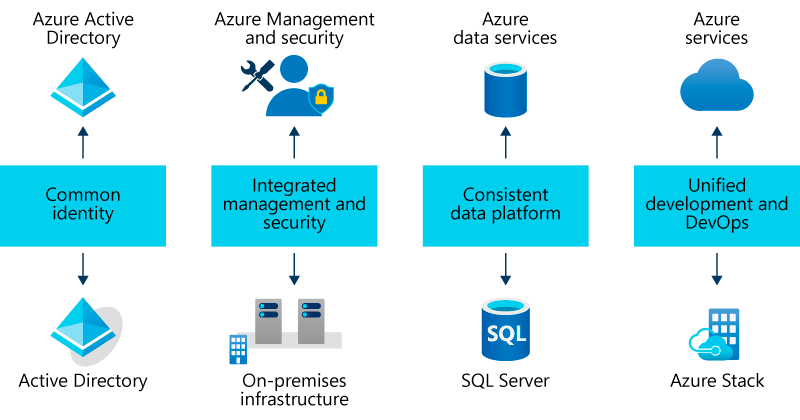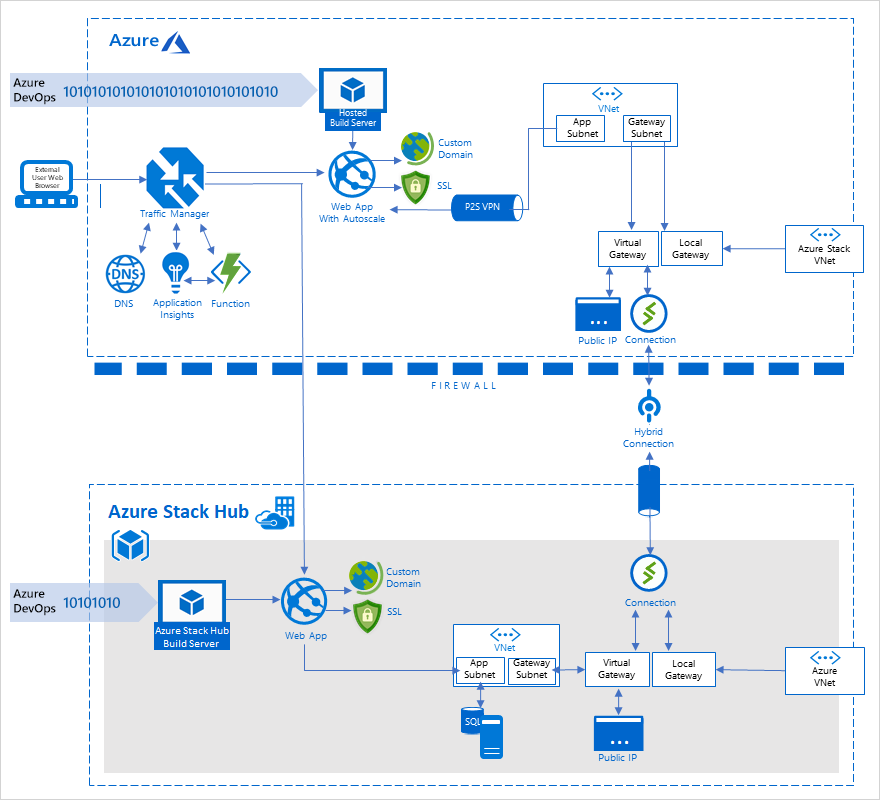Integrate hybrid cloud consistency
Hybrid deployment models during migration can reduce risk and contribute to a smooth infrastructure transition. Cloud platforms offer the greatest level of flexibility when it comes to business processes. Many organizations are hesitant to make the move to the cloud. Instead, they prefer to keep full control over their most sensitive data. Unfortunately, on-premises servers don't allow for the same rate of innovation as the cloud. A hybrid cloud solution offers the speed of cloud innovation and the control of on-premises management.
Using a hybrid cloud solution allows organizations to scale computing resources. It also eliminates the need to make massive capital expenditures to handle short-term spikes in demand. Changes to your business can drive the need to free up local resources for more sensitive data or applications. It's easier, faster, and less expensive to deprovision cloud resources. You pay only for those resources your organization temporarily uses, instead of having to purchase and maintain other resources. This approach reduces the amount of equipment that might remain idle over long periods of time. Hybrid cloud computing delivers all the benefits of cloud computing flexibility, scalability, and cost efficiencies with the lowest possible risk of data exposure.

A true hybrid cloud solution must provide four components, each of which brings significant benefits:
- Common identity for on-premises and cloud applications: This component improves user productivity by giving users single sign-on (SSO) to all their applications. It also ensures consistency as applications and users cross network or cloud boundaries.
- Integrated management and security across your hybrid cloud: This component provides you with a cohesive way to monitor, manage, and secure the environment, which enables increased visibility and control.
- A consistent data platform for the datacenter and the cloud: This component creates data portability, combined with seamless access to on-premises and cloud data services for deep insight into all data sources.
- Unified development and DevOps across the cloud and on-premises datacenters: This component allows you to move applications between the two environments as needed. Developer productivity improves because both locations now have the same development environment.
Here are some examples of these components from an Azure perspective:
Microsoft Entra ID works with on-premises Active Directory to provide common identity for all users. SSO across on-premises and via the cloud makes it simple for users to safely access the applications and assets they need. Admins can manage security and governance controls and also have the flexibility to adjust permissions without affecting the user experience.
Azure provides integrated management and security services for both cloud and on-premises infrastructure. These services include an integrated set of tools that are used to monitor, configure, and protect hybrid clouds. This end-to-end approach to management specifically addresses real-world challenges that face organizations considering a hybrid cloud solution.
Azure hybrid cloud provides common tools that ensure secure access to all data, seamlessly and efficiently. Azure data services combine with Microsoft SQL Server to create a consistent data platform. A consistent hybrid cloud model allows users to work with both operational and analytical data. The same services are provided on-premises and in the cloud for data warehousing, data analysis, and data visualization.
Azure Cloud Services, combined with Azure Stack on-premises, provide unified development and DevOps. Consistency across the cloud and on-premises means that your DevOps team can build applications that run in either environment and can easily deploy to the right location. You also can reuse templates across the hybrid solution, which can further simplify DevOps processes.
